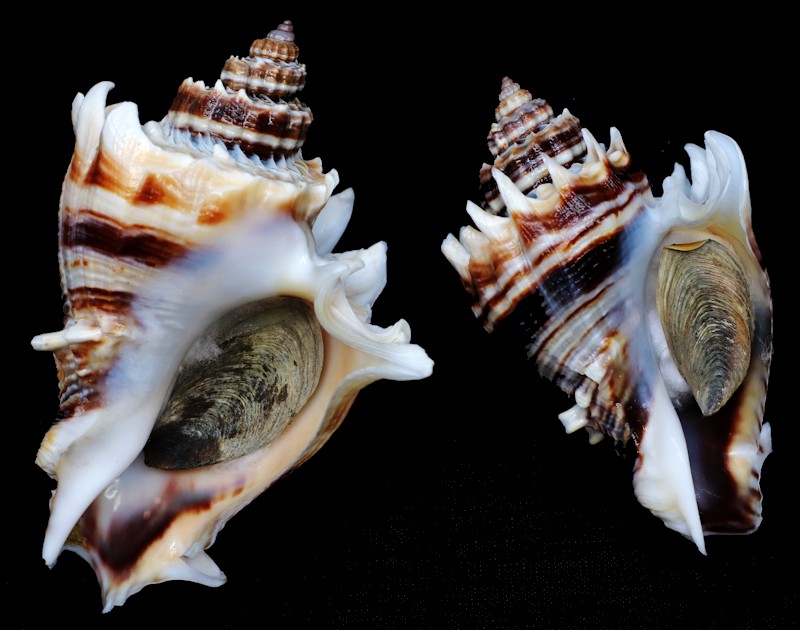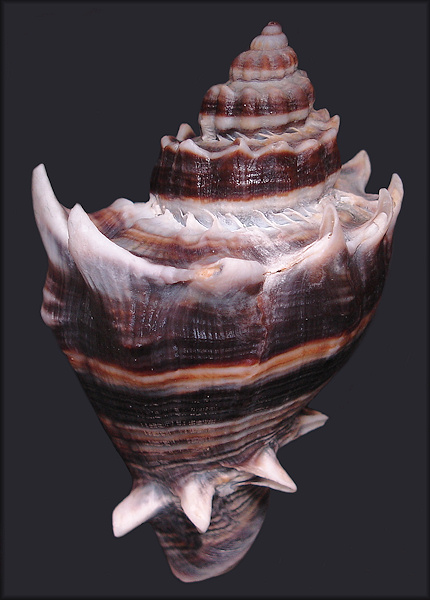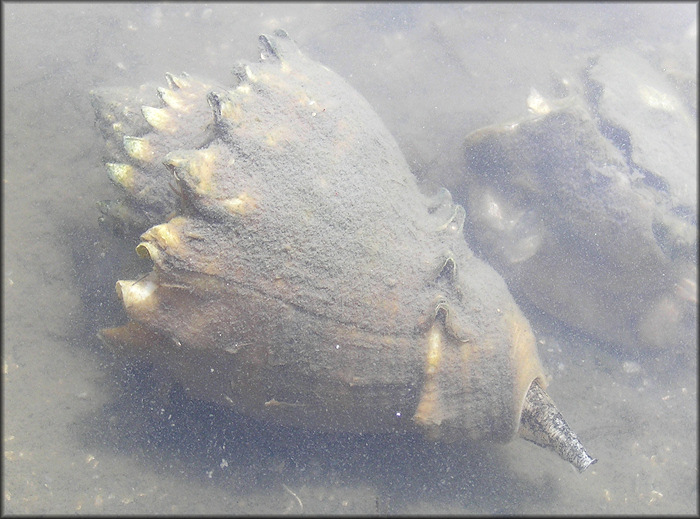|
Melongena corona (Gmelin, 1791) St. Johns County, Florida |
| For many years
the northern end of the range of Melongena corona on the east
coast of Florida was believed to be the Matanzas River just south
of Matanzas Inlet near the St. Johns/Flagler County line. Crabbed
Melongena shells were commonly found in the river near the inlet
but no living specimens could be found. Beginning in the Fall
of 2007 and continuing to the present (5/7/2016), empty Melongena corona
shells, in various stages of decay, were found near muddy
oyster habitat in the Tolomato River on both the north and south
sides of the river near Vilano Beach (immediately north of St.
Augustine) but no living specimens were forthcoming. The best of
these specimens (which appears to be relatively fresh dead) is
illustrated below. Subsequent to the 2007 finds in the Tolomato
River, additional crabbed or fragments of Melongena shells
were found at Mayport Naval Station at the mouth of the St. Johns
River, at Big Talbot Island State Park north of the
river (both locations in Duval County), and inside Nassau Sound
on the southern end of Amelia Island in Nassau County. Additionally,
a anecdotal report was received that an empty Melongena
shell had been found in southern Georgia. Recently received information indicates that Canadian sheller Harold Lamb, while visiting St. Augustine in 2013, found five live Melongena and egg cases in sucking mud in the Matanzas River near the County Road 206 (CR-206) bridge at Crescent Beach, St. Johns County Florida. This represented a significant northern extension of the confirmed range of the species. During Harold's May 2016 visit to St. Augustine he once again found one live Melongena corona and egg cases near the CR-206 bridge (see page three for images). Eight years later on 6/28/2022 Paul Jones found a pair of live specimens in the same area (see top image below). The specimens measured 89.21 and 105.38 mm. In light of Harold's finds in dangerous and nearly inaccessible mud habitat near Crescent Beach, the existence of similar nearly inaccessible habitat in the Tolomato River and Nassau Sound with the presence of empty Melongena shells, It appears possible that the range of Melongena corona could in fact extend to Camden County in far southeast Georgia where similar mud habitat exists. |
|
|
|
|
|
Crabbed near oysters, Tolomato River near Vilano Beach, St. Johns Co., Florida, 2/20/2008 (80 mm.). Collected and photographed by Brian Marshall. |


